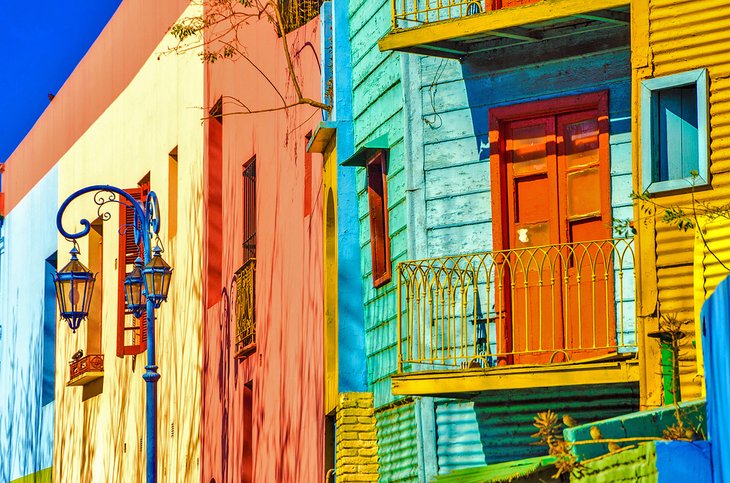Colombia, Cuba and Argentina vacation attractions using a high quality VPN for travel 2023 from inlovelyblue.com

Cuba, Colombia and Argentina vacation attractions with the top VPN for travel right now by inlovelyblue.com Digital Nomad: You should think about cyber security when staying in an Airbnb. There’s not just a risk of nosy hosts or creepy former guests leaving hidden cameras in the rental. There’s also a risk from the wifi itself. Nosy hosts and creepy former guests could track your online activities through an Airbnb’s wifi connection. You have no way of knowing if the last guest was a cyber criminal who put harmful malware or viruses on the wifi network. You don’t know who has previously had access to that Airbnb’s wifi network and who still does have access. And you certainly have no way of knowing if the host is spying on you through the wifi. That is, unless you use a VPN. Use a VPN on all unknown or unsecured wifi networks to stop others from watching you online. Read extra info at Best VPN for Colombia.
Quebrada (which literally translates to “broken”) is a name used in Argentina to refer to deep ravines. And the 155-kilometer-long Quebrada de Humahuaca in the northwest of the country is a perfect example of a beautiful ravine with a wild river running through it in summer (the river dries up in winter). A UNESCO World Heritage Site, this arid valley was once part of the Inca Empire and an important trade route. Today, most people arriving here come for its beauty – a mix of reds, pinks, and oranges that look almost painted on the hills around. The tiny town of Iruya (only 1,000 people live here), not far from the quebrada, is a must-see as well. Built directly into the mountainside at an elevation of over 2,700 meters, it offers stunning views over the mountains and fertile valleys all around it. In town, the dirt streets, old houses, and colorful celebrations that incorporate Indigenous details offer great photo opportunities.
If there’s one man who lingers large over Colombia’s recent history, it’s the billionaire drug trafficker Pablo Escobar. What few people realize is that you can actually visit the lavish estate built and owned by Escobar in Puerto Triunfo, about 110 miles east of Medellin. The sprawling complex, known as Hacienda Nápoles, fell into disrepair in the decade after Escobar’s death in 1993. But the local municipality took control of the property in the mid-2000s and turned it into-of all things-an ever-growing amusement park with an eclectic mix of themed zones, hotels, a water park, and safari-style zoo. The amusements and hotels are new, and signs of Escobar are now limited. The ruins of his former mansion were bulldozed, and one of the Cessna planes he used to smuggle drugs to the US that used to be perched atop the entry gate is gone (as is the gate). The only thing remaining is a small museum that grapples with his legacy and some of his antique car collection rusting peacefully in the sun.
If you’re looking for a ravishing slice of nature in central Cuba, head to El Nicho waterfalls. About a 90-minute drive from Trinidad or Cienfuego, in Parque El Nicho, these multi-tiered falls flow into several jade-green jungle pools – the perfect place to take a cool dip on a hot day. Driving here along the twisty rutted roads is an adventure in itself, and the scenery is beautiful. Once you arrive and pay the entrance fee, take the 1.5-mile palm-lined trail to the park’s most scenic spots. It meanders along a cool river and ascends through thick, tropical forest to the falls, where you can swim and sunbathe. Along the way, keep an eye out for the tocororo, Cuba’s national bird, and the beautiful royal palm. Walk beyond the falls, and you’ll end up at a scenic lookout with breathtaking views across lush valleys. Wondering about things to do with the family in Cuba? This is the perfect back-to-nature excursion. Best of all, the waterfalls gush year-round – even in the dry season.
The world’s third-largest producer of coffee beans, Colombia is a fantastic country for tastings and tours. The vast majority of production takes place in the subtropical Andean hills west of Bogota between the small cities of Armenia, Pereira, and Manizales. This region, known as the Eje Cafetero (or Coffee Axis), is home to a growing number of coffee plantations that have opened up their operations to the public in recent years for tours, tastings, and lavish farm stays. These small (and often organic) plantations are the kind of places where the farmer-owner might take an hour out of his day to explain the process of how a humble “cherry” turns into a coffee bean that will one day be roasted and ground into a latte back home. The small resort town of Salento is easily the most attractive place to base yourself, with numerous farm tours nearby and plenty of things to do. You’ll also have easy access to attractions like Cocora Valley, home to the tallest palm trees in the world. You can rent bicycles from Salento to explore the region under your own steam or ride on one of the old-fashioned Willy jeeps that serve as the town’s de facto taxis.
This is my first two years as a digital nomad. It’s more of a diary entry and it’s intended to show you, my readers, that there’s a big wide world out there to explore. And that you needn’t be chained to a desk working a traditional 9-5 job. The notion that you can only work in a specific office at certain times of the day is old fashioned. We’re in a digital age and the internet has made the world of work far more flexible. If you want to be a ‘digital nomad’ you just need to think outside the box. And the first step is realising that the things chaining you to your job or city are of your own making. They’re a product of your own choices to date. You can consciously make different choices. Discover even more information on https://inlovelyblue.com/.
The 156,000-acre Tierra del Fuego National Park extends all the way from Beagle Channel to the Chilean Border and northwards to Lago Kami. It’s a paradise for hikers, with trails for all experience levels. Using the town of Ushuaia as a base, adventurers head out onto the park’s hiking trails or along the coastline to explore its dramatic scenery, which includes everything from tall waterfalls, dense forests, and mountains, to beautiful glacier-fed lakes such as Roca and Fagnano. One of the most popular routes is Senda Costera, a coastal path to Lake Roca from Ensenada Bay that offers a chance to see a rich diversity of wildlife including Andean condors. Those who prefer to see the sights in comfort can take a ride on the superb Southern Fuegian Railway, an elegant antique steam train through the park to Cañadon de Toro.
Cuba, the Caribbean’s largest island, drips with history, culture, and a captivating mystique. Live music wafts through the cobbled squares in Havana’s World Heritage-listed Old Town, vintage cars still cruise the streets, and the beautiful old buildings in Cuba’s colonial cities evoke the feel of a country frozen in time. Cuba also abounds in natural beauty. This vast island has more than 5,000 kilometers of coastline, much of it rimmed by dazzling beaches. Coral reefs glimmer in the turquoise waters, and Cuba’s lush countryside and sublime islands have played host to presidents; provided refuge to revolutionaries; and inspired writers from around the world, Hemingway among them.
